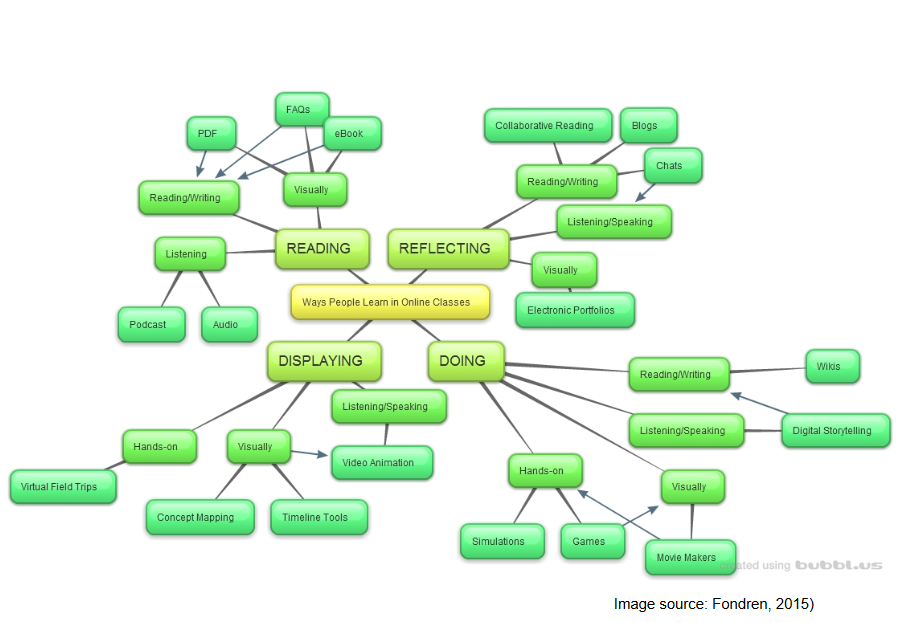R2D2 Model
The read, reflect, display and do model (Bonk and Zhang, 2006) provides one way of creating a constructivist learning environment. It suggests that we should draw from an array of technology options available to online learners through a range of media for accessing information and expressing ideas, and give learners an option to apply their learning to a real life context.
Offering a choice of visual and auditory modes of access and expression alongside text can enrich learning and help to meet learner needs, making learning personally meaningful. A multi-modal approach for collaboration and feedback can make learning more dynamic and responsive.
Results from an academic skills course at Auckland University found perceived benefits from students. The researchers suggest that the application of the R2D2 model as a learning and teaching ‘lens’ promotes active learning by making sure that students are at the centre of the design process (Cartner and Hallas, 2009). Such an approach ‘magnifies’ reflection and doing as part of online learning, making sure that blended spaces are collaborative, active and authentic.
Read more about the use of online tools here: Blended instructional practice: A review of the empirical literature on instructors' adoption and use of online tools in face-to-face teaching: http://www.sciencedirect.com/science/article/pii/S1096751616300203
References:
Bonk, C.J. and Zhang, K., 2006. Introducing the R2D2 model: Online learning for the diverse learners of this world. Distance Education, 27(2), pp.249-264.
Cartner, H. and Hallas, J., 2009. Exploring the R2D2 model for online learning activities to teach academic language skills. In Ascilite Conference, Auckland, New Zealand. Retrieved from http://www.ascilite.org.au/conferences/auckland09/procs/cartner. pdf.
Fondren, A., 2015. Ways people learn in online classes, [online] Available at: https://ashleyfondren.wordpress.com/2015/06/30/ways-people-learn-in-online-classes-mind-map [Accessed 30 May 2017]


